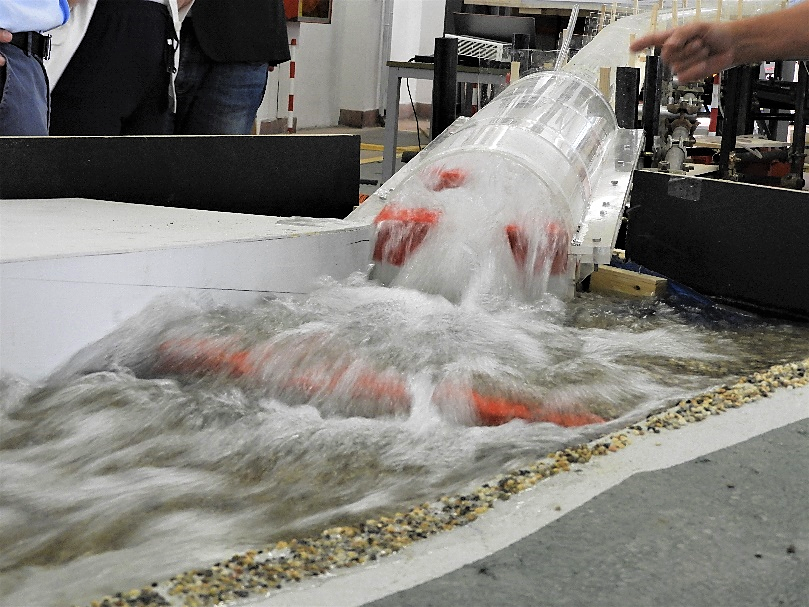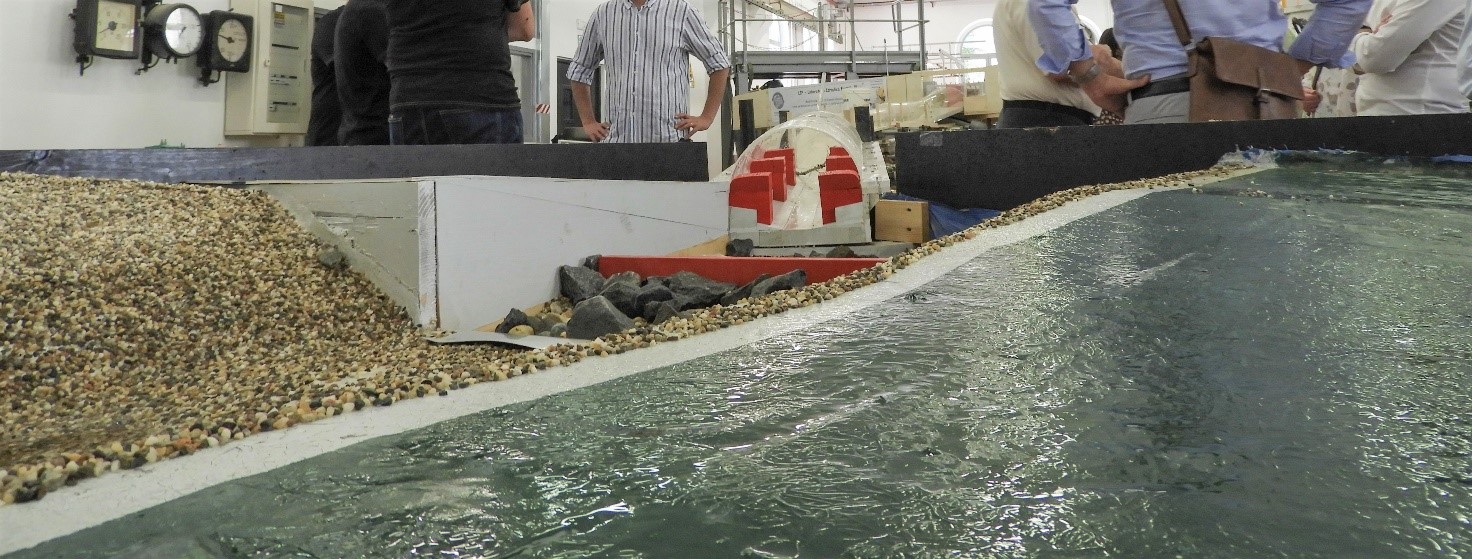
- This event has passed.
The Fantoli Hydraulics Laboratory (LIF) realized a physical model of hydraulic bypass for the Riunon landslide
30 June 2021 @ 08:00 - 6 July 2021 @ 10:00

The Riunon landslide (Valfurva, Sondrio) is an unstable portion of the Frodolfo torrent slope. In case the whole unstable mass collapses the watercourse will be totally obstructed. The formation of a reservoir upstream of the natural “dam” and its consequent breaching would create a flood wave with serious consequences for the downstream territory.
The team of the Hydraulics Laboratory “Fantoli” (LIF) of the Department of Civil and Environmental Engineering, guided by Eng. Gianluca Crotti and supported by Prof. Francesco Ballio and Alessio Radice, realized a physical model of a hydraulic bypass to mitigate the risk in this area.
 How does the bypass work?
How does the bypass work?
The work consists of a wired, upstream of the landslide area, which allows the river to follow its natural path; while, in case of danger, to drift (by closing the wired openings) within the hydraulic bypass (i.e. an underground tunnel).
At the end of the tunnel, which is about 2500 meters long, deflectors are present to reduce the velocity of the flow before its return into the main river. The tridimensional nature of the flow in certain areas, in addition to the management of the solid material (in the bypass), make necessary to use a physical model to validate design choices.

Details
- Start:
- 30 June 2021 @ 08:00
- End:
- 6 July 2021 @ 10:00
- Event Categories:
- Altro, Research and Innovation
- Event Tags:
- bypass, hydraulic model, landslide, risk mitigation, Riunon
Organizer
- Gianluca Crotti
